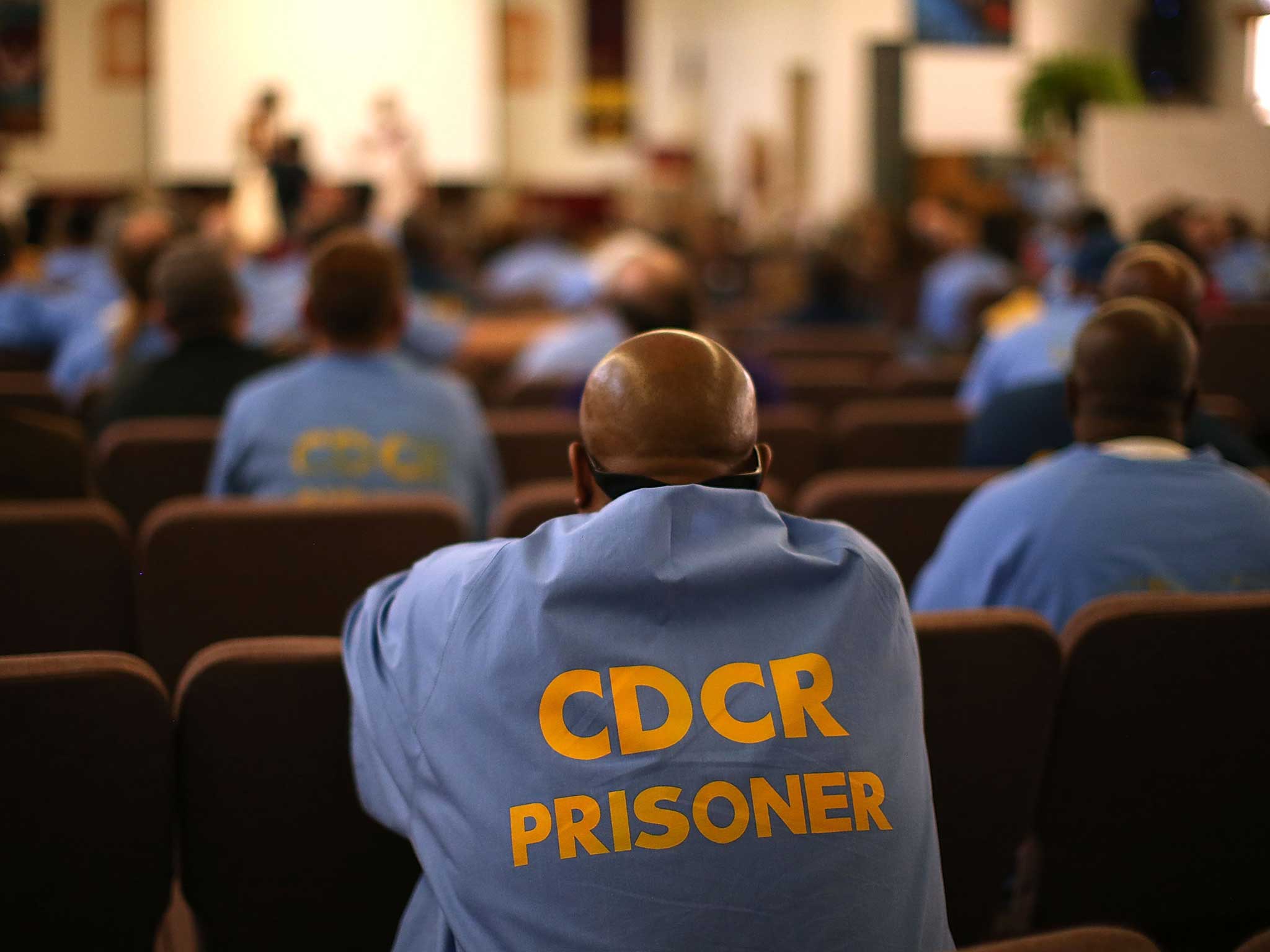San Quentin inmates answer six questions about day-to-day prison life
Questions ranged form the simple, 'what do prisoners eat' to the profound: 'What makes an inmate smile?'

Your support helps us to tell the story
From reproductive rights to climate change to Big Tech, The Independent is on the ground when the story is developing. Whether it's investigating the financials of Elon Musk's pro-Trump PAC or producing our latest documentary, 'The A Word', which shines a light on the American women fighting for reproductive rights, we know how important it is to parse out the facts from the messaging.
At such a critical moment in US history, we need reporters on the ground. Your donation allows us to keep sending journalists to speak to both sides of the story.
The Independent is trusted by Americans across the entire political spectrum. And unlike many other quality news outlets, we choose not to lock Americans out of our reporting and analysis with paywalls. We believe quality journalism should be available to everyone, paid for by those who can afford it.
Your support makes all the difference.Prisoners in the US have answered questions from the public about what their day-to-day life is actually like.
The Last Mile training programme works with inmates incarcerated in San Quentin prison, California, publishing their responses to questions from the public on the social platform.
Many of the men taking part have been convicted of either first degree or second degree murder, but will be eligible for parole in a number of years.
San Quentin is one of the US’s oldest and largest prisons. Established in 1852, it houses California’s only death row and has a total of 4,223 inmates – operating at around 137 per cent occupancy.
What sort of food do the inmates get?
Prisoners are served a standard menu, although many also experiment and can purchase an approved “hot pot” to cook their own meals.
4,223
prisoners (as of 2013)
Joesph Demerson, 47, imprisoned for 30 years for murder and attempted murder, wrote as a Texan he’s a huge foodie and using a hot pot can create traditional gumball recipes.
“This morning we were served: 2 boiled eggs, 2 pieces of hash-brown, 2 slices of wheat break, 4oz of stewed prunes, and a 4oz. carton of milk,” Floyd S Hall wrote . “For lunch we had 2 PB&J sandwiches, 2 cookies, and a pack of corn nuts. Fried foods are not served here.”
How do they exercise and stay healthy?
Many of the inmates who replied to the thread said exercise was one of the main activities in prison, as “we prisoners don’t have but time.”
Although prison authorities banned weights inside in 1997 (to prevent inmates becoming too “big”) prisoners innovated and use each other as weights or the outdoor furniture. Other prisoners also noted the importance of mental health, and how difficult it can be to maintain in prison.
How do they pass time in prison?
Tommy Winfrey, 36, sentenced to 25 years to life for second degree murder, said as he grew up in prison he has discovered a “few ways to occupy my time.”
“Reading has to be my favourite way to kill time,” but he added painting and drawing have been among the most rewarding activities he’s learnt.
Christopher Schuhmacher, 41, jailed for 16 years for murder, lists ten activities to pass the time. Among them are sleeping and writing letters, as well as reading (he was reading Homer’s Odyssey at the time), and answering Quora questions.
“Taking part in the Quora community and engaging in the discussion, keeps me connected with the world outside prison walls,” he writes.
Why do riots start in prison?
The inmates who responded to this question said riots generally occur between “different races or rival gangs.”
Chung Kao, 53, imprisoned for 19 years to life for second degree murder, was present at the 2009 riot in the California Institution for Men (CIM). Over 250 prisoners were hurt in the 11-hour riot.
Kao said the beginning of the riot was “trivial and silly” after two racial groups (blacks and Mexicans started antagonising one another) but soon escalated out of control. “Two dorms were lit up when the Blacks were trying to burn the Mexicans alive in there. All the prison guards backed out of the facility and were shooting at the rioting mob, with lethal rounds, from outside the electrical fence.”
What’s the best time of day in prison?
Answers to this question revealed a lot about the claustrophobic nature of prison life.
“I like the mornings because it is also peaceful,” writes Phoeun You, 39, sentenced to 35 years to life for first degree murder. “It is an opportunity to clear my mind and be connected to nature.”
But for Schuhmacher it is 9pm when his cell door is locked. “This is the time when I'm finally able to relax. I can let down my guard and take off the prison mask I wear that assists me in making it through the day.”
What makes an inmate smile in prison?
“I practice different types of meditation for stress relief and to find inner peace,” Kao writes.
Merritt, who works with self-help groups within the prison, adds: “When I hear about how men in here work on rebuilding and maintaining their relationship with their love ones, it always brings a smile to my face.”
Join our commenting forum
Join thought-provoking conversations, follow other Independent readers and see their replies
Comments